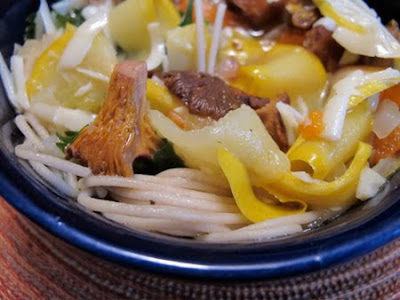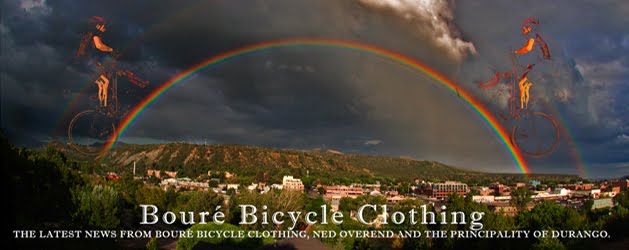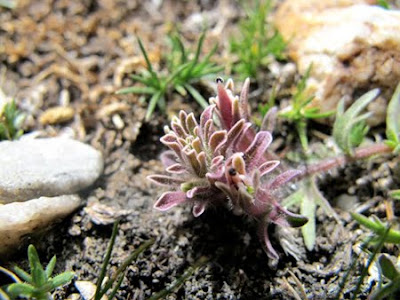
Monday, September 26, 2011
Late Bloomers

Super-Ultramarine
Fungus Among Us
Tuesday, September 20, 2011
Micropolitan Banana Stand

The Durango area was recently named as the number one micropolitan in the nation. A micropolitan is a small city with a population of more than 10,000 but less than 50,000. Policom, an independent economic research firm, recently conducted a study that determined that Durango/La Plata County area has the strongest economy in the United States, edging out 575 other similar-sized areas.
This isn’t Durango’s first dabbling in the top 10 for economic strength as it debuted in 2008 and steadily climbed to the number one spot. The study shows that Durango has an extremely robust economy and higher than average wages. Strong industries like natural resources, farming, tourism, the second home market, and vibrant companies such as Mercury Payment Systems, Rocky Mountain Chocolate Factory, Bouré Bicycle Clothing, among many others have helped grow the economy, contributing to the quality of life that the community enjoys.
There’s no doubt that Durango is an incredible place to live, work and visit! While the population is only 16,000 people, the vibrant town features a quality of life much like a larger, metropolitan city with a plethora of things to do. Downtown Durango features an incredible arts scene with galleries, rejuvenating spas, unique boutiques and more restaurants per capita than San Francisco. Fort Lewis College also brings additional culture, energy and a positive vibe that makes the town thrive. As home to Mercy Regional Medical Center and as the headquarters for the Four Corners area, Durango’s sophisticated healthcare services are equal to the level of care other communities ten times its size have.
And the spectacular, rugged San Juan Mountains provide the perfect backdrop for maintaining this quality lifestyle. Durango has some of the best weather around with winter days that produce perfect conditions for skiing and riding, as well as a warm, sunny, dry climate that makes enjoying summer and fall outdoor adventures that much better! With hundreds of miles of trails, natural hot springs and abundant wildlife, it’s easy to find ways to escape the hectic day-to-day activities of life. It’s no wonder people are drawn here.
We invite you to be part of this vibrant community that is a great investment for many more reasons than were listed above. Come visit Durango Mountain Resort this autumn to view the brilliant fall colors this area is known for and see what a top micropolitan culture can bring to your life.
Monday, September 19, 2011
Jack and the Magnets

While they were meant as tokens of gratitude to be dispensed during PBP proper, some slipped away before I took the start. In particular they connected me to the pivotal controle town of Loudeac in Brittany. This magnetic attraction began before the ride, grew stronger during the ride, continued after the ride, and promises to continue doing so.
But we also wanted to cycle a bit of the course. My chain had done some sort of a Triple Salchow in transit and despite my own and the efforts of several vastly more qualified individuals refused a return to normal. So I was delighted when I walked into Cycles Mace in Loudeac to find a native son who spoke Canadian.
Jeff was a gem and was riding PBP as was Claris, the proprietress of Cycles Mace. The local Loudeac cycling club, drawing from a population of no more than 10,000 inhabitants was fielding 45 riders. This impressed as the San Francisco Randonneurs, drawing from a population region of between 5 million and 10 million, had only managed to equal Loudeac’s participation!
Several hours later I returned to find the Cycles Mace had solved the puzzle of my chain. When I asked the cost of the repair they would not accept payment. But the owner and the mechanic were delighted to receive the SFR magnets.
During PBP, 450 kilometers into the ride, I rolled into the Loudeac controle and gave the controle worker and her interpreter SFR magnets. As I left the controle on the exciting bumpercar/cyclocross course I heard the mechanic who had saved my chain yelling at me. When I stopped he came over and we hugged as he asked how his repair was holding up and I inquired about Claris and Jeff.
Time passed.
Somewhere after Druex I came upon a rider who was going too slowly to finish on time. He stared intently at his bottom bracket and it hit me that he was suffering from Shermer’s Neck. He spoke only Japanese but I motioned for him to pull over. I flipped his handle bars up and ran an inner-tube thru his helmet and around his shoulders. These improved his situation dramatically.
Up the road a bit I found a rider in a similar fix. He was French and spoke a fair amount of English. Patrick was from Loudeac as I learned when I asked him where he’d got his Cycles Mace cap. His aging Peugeot was not a candidate for bar flipping as all the bolts were rusted tightly. I went to work on making his helmet fit properly and attaching an inner tube to his helmet and shoulders. Apparently I was a tad too zealous as Patrick asked if I was trying to kill him.
Time was running out so I suggested Patrick follow my wheel to the finish. We worked out basic signals and made our way towards the finish as the grains drained the hourglass.
On our way we came across two fellows from the same club, The Haute Alps of Somewhere. One had Shermer’s Neck but knew what was happening as he’d had it in 2007. He couldn’t rotate his bars due to the cables but had fashioned an ingenious, artistic, and ineffectual cervical collar out of newspaper and plastic bags. He declined my inner-tube invitation but joined our “Shermer’s Neck Pace Line.”
As we proceeded at a slow and careful pace through the suburbs our gruppo grew as many riders had so very little left that they had slowed to a Shermer’s Neck speed.
We finished on time. The Japanese rider thanked me with the poignant, profound, and profuse thanks with which people of his culture transfer affection. I gave him and Patrick a magnet. I will see them again, this I know.
Thursday, September 15, 2011
Chanterelles

Cantharellus cibarius, commonly known as the chanterelle, is a fungus in the family of Cantharellaceae. It is orange or yellow, meaty and funnel-shaped. On the lower surface, underneath the smooth cap, it has gill-like ridges that run almost all the way down its stipe, which tapers down seamlessly from the cap. It has a fruity smell, reminiscent of apricots and a mildly peppery taste and is considered an excellent edible mushroom.




Photography and Cuisine by Lisa Bourey
Friday, September 2, 2011
The Great Basin
Amazingly, the unique Basin and Range topography ranges from North America's lowest point in Death Valley to the Lower 48's highest point less than 100 miles away at the summit of Mount Whitney.

Chenrezig Sand Mandala
To the amazement of all who followed the progress, the monks spent four days in Durango constructing the Chenrezig Sand Mandala at the Open Shutter Gallery. Sand painting is an ancient Tibetan art form and is constructed from dyed sand particles to represent the esoteric, textual traditions of Buddhism. This Mandala is a representation of the Bodhisattva of Compassion, or Chenrezig.



















